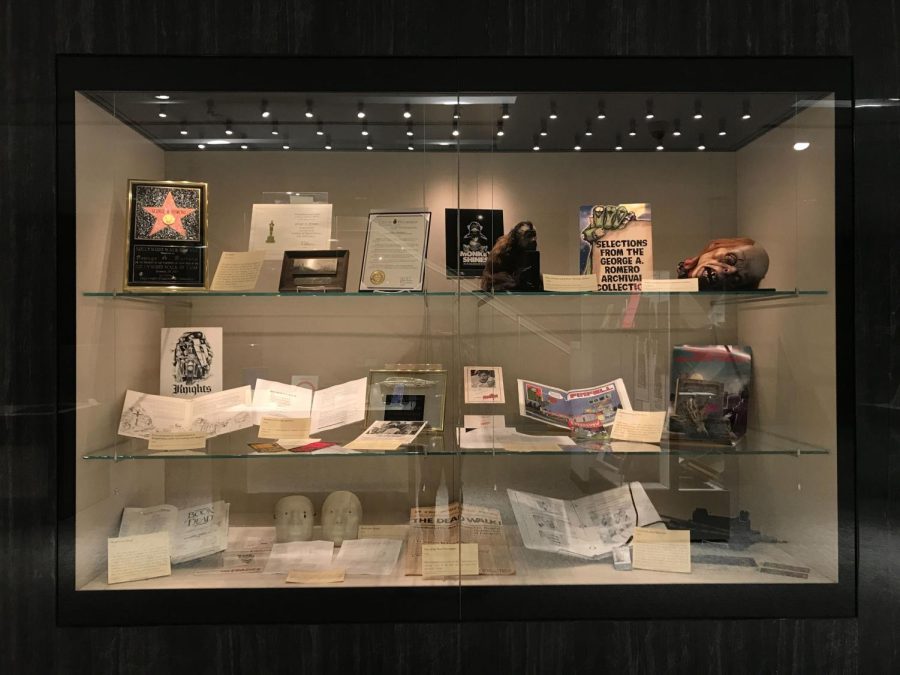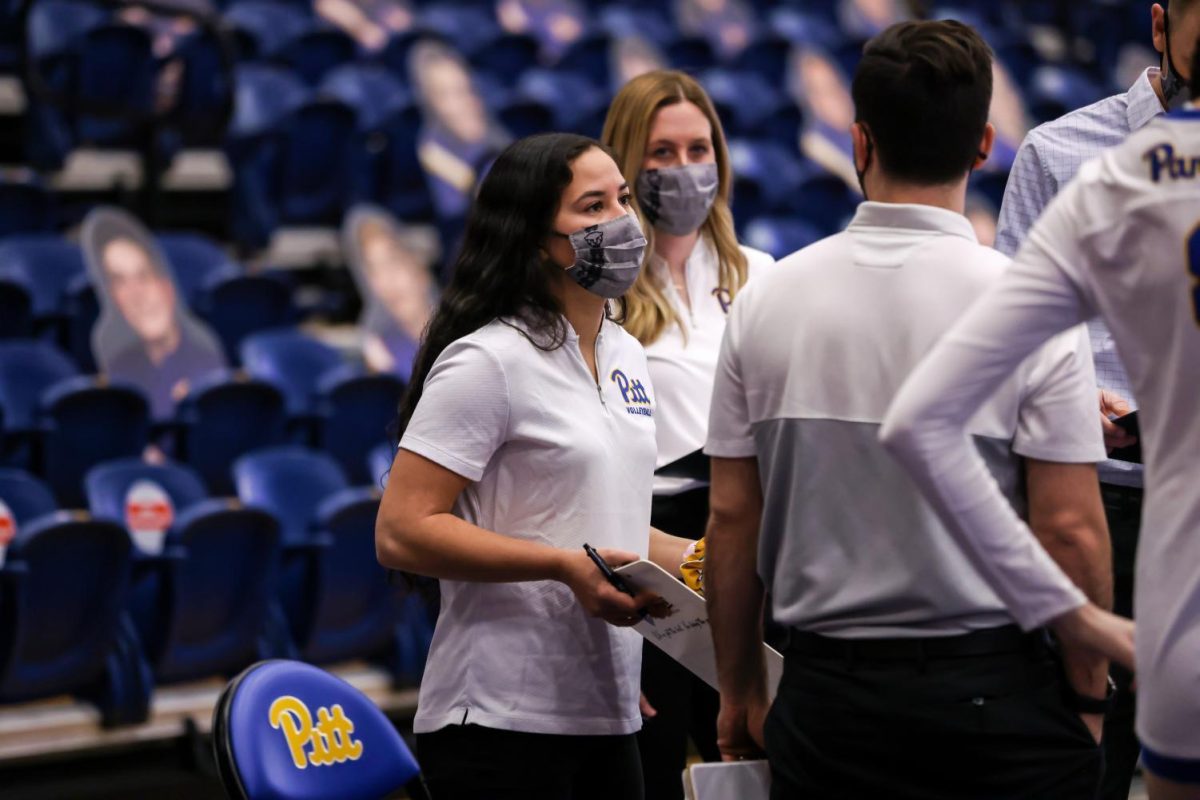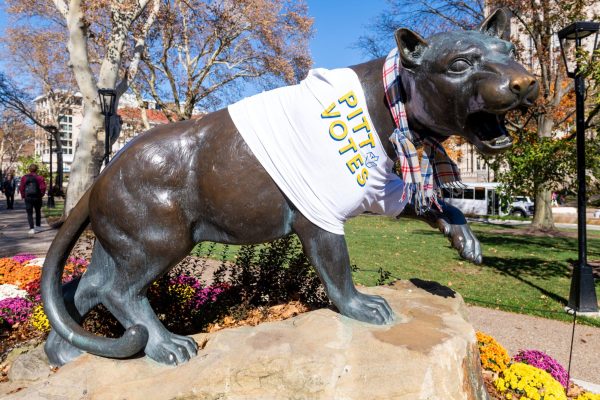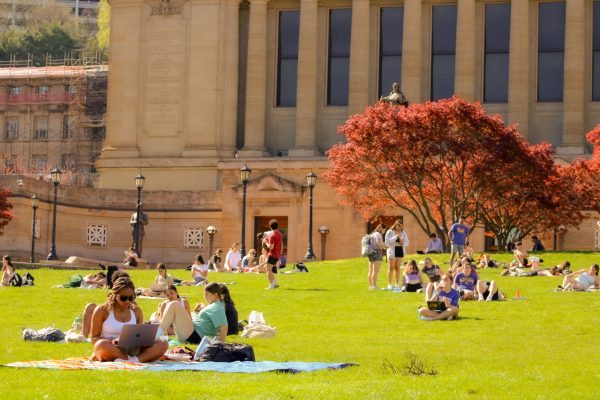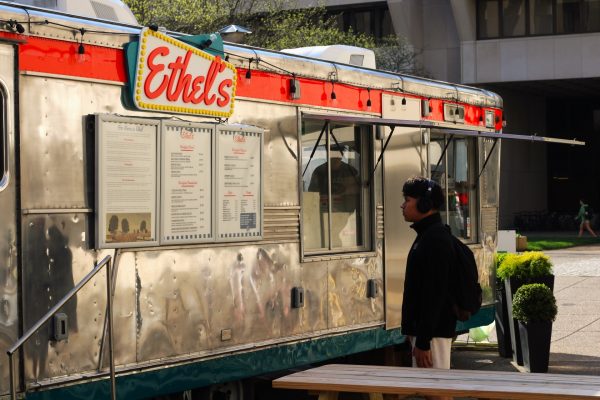Inside Hillman Library’s recent collections and exhibitions
Romita Das | Senior Staff Photographer
The archives and special collections exhibit on the third floor of Hillman Library.
October 7, 2022
The digital wall, an exhibit on the third floor of Hillman Library, displays a gallery of artwork and research on print media from students and faculty at Pitt. It’s just one of the many elements within the library’s collections, which range from digital to physical material.
Megan Massanelli, Hillman’s Archives & Special Collections engagement and outreach librarian, said the library’s collections include a number of rare primary sources, such as ancient maps for Latin America and other areas, with the oldest one tracing back to the 14th century.
“A lot of the materials we have are … handwritten letters, photographs, maps,” Massanelli said. “And because our materials are rare and unique, we don’t circulate them. Sometimes they might be the only copy of the item. Unlike the physical books in the collection that you can check out and take home with you, you have to be on site in one of our reading rooms.”
The third floor gallery was updated last week to display U.S. banned books to honor Banned Books Week. The library displays each gallery for two semesters, with minor updates every month based on different events and holidays, Massanelli said.
“Some exhibits rotate, such as the Japanese woodblock prints. Right now [the gallery] contains exhibits on banned books in the U.S. And it’s the one that’s just right outside the reading room door,” Massanelli said.
Daniel Pennell, the curator for Slavic, European and Eurasian Studies at the Archives and Special Collections department, said during Banned Books Week, people should reflect on the amount of libraries, schools and households that wrongfully ban certain titles.
“The banned books exhibit is designed to highlight the fact that, although we’re in the 21st century, Americans don’t tend to think of [the U.S.] as being a place where books are banned,” Pennell said. “In fact … Pennsylvania, for example, consistently shows up on the top 10 list of states where books in specific localities are in fact banned.”
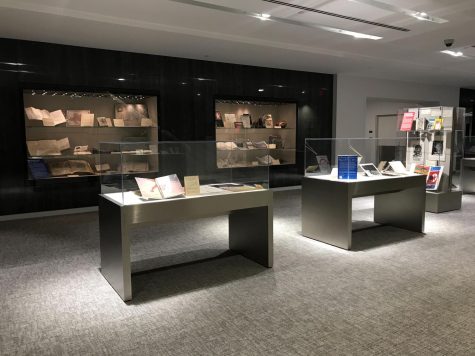
Pennell also said the banned books display is meant to recognize pieces of children’s literature that communities and adults tend to neglect.
“[There are] parents who object to their children having access to these books in their school libraries, or even members of the community who object to their tax dollars going toward making certain books available at the public library,” Pennell said.
In addition to the banned books exhibit, the third floor gallery displays international print media on the digital wall.
Diana Flatto, a doctorate student in the art and architecture department, created a Latin American print media exhibit in the gallery’s cases. She said it represents global south solidarity for Latin America spanning from 1920 to 1970.
“I spent a long time doing research, so I knew that I wanted to curate something in this space. My exhibition deals with themes … from the ‘60s,” Flatto said. “I wanted to go all the way back to the ‘20s to find specific instances that arose earlier.”
Massanelli said the library includes various collections within different geographic areas. The materials mainly come through donations and purchases.
“Some items come to us by donation, [and] purchase is another way. We have different curators with different subject specialties in our area,” Massanelli said. “We have a significant horror studies archive collecting area, a children’s literature collecting area. We also have Eastern European and Latin American, and then we work with East Asian too.”
The library collaborates with local art museums and institutions like the Heinz History Center to gather different art pieces for the exhibitions, especially on the third floor of the library, Massanelli said.
“[My colleague] has collaborated with some institutions, both in Japan and in the U.S. [The department] has lent materials for exhibition to other places, for example, the Heinz History Center in Pittsburgh,” Massanelli said. “So sometimes the curators will come here and do research on our collections, and we will lend something to them.”
Along with Massanelli, Pennell participated in creating the gallery in March 2020. He said his goal was to help students to recognize the importance of historical studies.
“One of the goals that I had in creating this exhibit was to point to the fact that there is this new certificate in Central European studies, also some of the faculty members that are teaching courses that count toward that certificate,” Pennell said.
Pennell also said both students and faculty can benefit from the primary sources the library collections offer, especially in the third floor’s “classroom” space, which is a space dedicated to storing primary source materials, teaching classes and studying.
He said the library invites professors to bring students to the third floor classroom during class times so that they can relate some materials in the exhibitions to the class lesson.
“Among some of the other materials that we may have in the collection — that pertain perhaps more directly to the specific courses that they’re teaching — I can actually bring some of those materials to our classroom,” Pennell said. “And then faculty can arrange for class visits to bring their students to the classroom.”
Editor’s Note: A previous version of this story incorrectly stated that Diana Flatto’s exhibit is on the digital wall. It is in the gallery’s cases. The Pitt News regrets this error.


